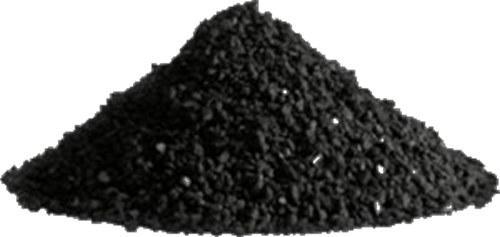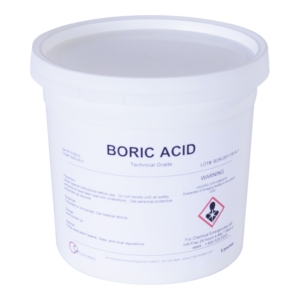Description
Activated carbon
From Wikipedia, the free encyclopedia
Activated carbon, also called carbon, activated charcoal or activated coal, is a general term which covers carbon material mostly derived from charcoal. For all three variations of the name, “activated” is sometimes substituted with “active”. By any name, it is a material with an exceptionally high surface area. Just one gram of activated carbon has the surface area of approximately 500 m2, typically determined by nitrogen gas adsorption, and includes a large amount of microporosity. Sufficient activation for useful applications may come solely from the high surface area, though often further chemical treatment is used to enhance the absorbing properties of the material.
Production:
It can be produced in two different processes from a variety of carbonaceous source materials, e.g. nutshells, wood, coal. It can be produced using one of the two following processes:
Physical reactivation: The precursor is developed into activated carbons using gases. This is generally done by using one or combining the following processes:
Carbonization: Material with carbon content is pyrolysed at temperatures in the range 600-900 ?C, in absence of air (usually in inert atmosphere with gases like argon) Activation/Oxidation: Raw material or carbonised material is exposed to oxidizing atmospheres (carbon dioxide, oxygen, or steam) at temperatures above 250 ?C, usually in the temperature range 600-1200 ?C. Chemical activation: Impregnation with chemicals such as acids like phosphoric acid or bases like potassium hydroxide, sodium hydroxide or salts like zinc chloride, followed by carbonization at temperatures in the range 450-900 ?C. It is believed that the carbonization / activation step proceeds simultaneously with the chemical activation. This technique can be problematic in some cases because, for example, zinc trace residues may remain in the end product. However, chemical activation is preferred over physical activation owing to the lower temperatures and shorter time needed for activating material.
Saturated activated carbon can be regenerated by heating.
Properties:
A gram of activated carbon can have a surface area in excess of 500 m?, with 1500 m? being readily achievable. For comparison, a tennis court is about 260 m?. Carbon aerogels, while more expensive, have even higher surface areas, and are used in special applications.
Under an electron microscope, the structure of activated carbon looks a little like ribbons of paper which have been crumpled together, intermingled with wood chips. There are a great number of nooks and crannies, and many areas where flat surfaces of graphite-like material run parallel to each other, separated by only a few nanometers or so. These micropores provide superb conditions for adsorption to occur, since adsorbing material can interact with many surfaces simultaneously. Tests of adsorption behaviour are usually done with nitrogen gas at 77 K under high vacuum, but in everyday terms activated carbon is perfectly capable of producing the equivalent, by adsorption from its environment, liquid water from steam at 100?C and a pressure of 1/10,000 of an atmosphere.
Physically, activated carbon binds materials by Van der Waals force, specifically London dispersion force.
Activated carbon does not bind well to certain chemicals, including lithium, alcohols, glycols, ammonia, strong acids and bases, metals and most inorganic minerals, such as sodium, iron, lead, arsenic, fluorine, and boric acid. Activated carbon does adsorb iodine very well and in fact the iodine number, mg/g, (ASTM D28 Standard Method test) is used as an indication of total surface area.
Activated carbon can be used as a substrate for the application of various chemicals to improve the adsorptive capacity for some inorganic (and problematic organic) compounds such as hydrogen sulphide (H2S), ammonia (NH3), formaldehyde (HCOH), radio-isotopes (Iodine-131) and mercury (Hg). This property is known as chemisorption
Classifications:
Activated carbons are complex products which are difficult to classify on the basis of their behaviour, surface characteristics and preparation methods. However, some broad classification is made for general purpose based on their physical characteristics. ?
Powdered activated carbon (PAC)
Traditionally, active carbons are made in particular form as powders or fine granules less than 1.0 mm in size with an average diameter between .15 and .25 mm.[citation needed] Thus they present a large internal surface with a small diffusion distance. PAC is made up of crushed or ground carbon particles, 95?100% of which will pass through a designated mesh sieve or sieve. Granular activated carbon is defined as the activated carbon being retained on a 50-mesh sieve (0.297 mm) and PAC material as finer material, while ASTM classifies particle sizes corresponding to an 80-mesh sieve (0.177 mm) and smaller as PAC. PAC is not commonly used in a dedicated vessel, owing to the high headloss that would occur. PAC is generally added directly to other process units, such as raw water intakes, rapid mix basins, clarifiers, and gravity filters.
Granulated activated carbon (GAC)
Granulated activated carbon has a relatively larger particle size compared to powdered activated carbon and consequently, presents a smaller external surface. Diffusion of the adsorbate is thus an important factor. These carbons are therefore preferred for all adsorption of gases and vapours as their rate of diffusion are faster. Granulated carbons are used for water treatment, deodourisation and separation of components of flow system. GAC can be either in the granular form or extruded. GAC is designated by sizes such as 8×20, 20×40, or 8×30 for liquid phase applications and 4×6, 4×8 or 4×10 for vapour phase applications. A 20×40 carbon is made of particles that will pass through a U.S. Standard Mesh Size No. 20 sieve (0.84 mm) (generally specified as 85% passing) but be retained on a U.S. Standard Mesh Size No. 40 sieve (0.42 mm) (generally specified as 95% retained). AWWA (1992) B604 uses the 50-mesh sieve (0.297 mm) as the minimum GAC size. The most popular aqueous phase carbons are the 12×40 and 8×30 sizes because they have a good balance of size, surface area, and headloss characteristics.
Pelleted activated carbon
Consists of extruded and cylindrical shaped activated carbon with diameters from 0.8 to 5 mm. These are mainly used for gas phase applications because of their low pressure drop, high mechanical strength and low dust content.
Impregnated carbon
Porous carbons containing several types of inorganic impregnant such as iodine, silver, cation such as Al, Mn, Zn, Fe, Li, Ca have also been prepared for specific application in air pollution control especially in museums and galleries. Silver loaded activated carbon is used as an adsorbent for purifications of domestic water. Drinking water can be obtained from natural water by treating the natural water with a mixture of activated carbon and flocculating agent Al(OH)3. Impregnated carbons are also used for the adsorption of H2S and mercaptans. Adsorption rates for H2S as high as 50% by weight have been reported.
Polymers coated carbon
This is a process by which a porous carbon can be coated with a biocompatible polymer to give a smooth and permeable coat without blocking the pores. The resulting carbon is useful for hemoperfusion. Hemoperfusion is a treatment technique in which large volumes of the patient’s blood are passed over an absorbent substance in order to remove toxic substances from the blood.
Properties of activated carbon:
Iodine Number
It is the most fundamental parameter used to characterize activated carbon performance. It is a measure of activity level (higher number indicates higher degree of activation). It is a measure of the micropore content of the activated carbon (0 to 20 ?, or up to 2 nm) by adsorption of iodine from solution. It is equivalent to surface area of activated carbon between 900 m?/g and 1100 m?/g. It is the standard measure for liquid phase applications.
Apparent density
Higher density provides greater volume activity and normally indicates better quality activated carbon. ?
Hardness/abrasion number
It is a measure of the activated carbon?s resistance to attrition. It is important indicator of activated carbon to maintain its physical integrity and withstand frictional forces imposed by backwashing, etc. There are large differences in the hardness of activated carbons, depending on the raw material and activity level.
Ash content
It reduces the overall activity of activated carbon. It reduces the efficiency of reactivation. The metals (Fe2O3) can leach out of activated carbon resulting in discoloration. Acid/water soluble ash content is more significant than total ash content.
Carbon tetrachloride activity
Measurement of the porosity of an activated carbon by the adsorption of saturated carbon tetrachloride vapour.
Particle size distribution
The finer the particle size of an activated carbon, the better the access to the surface area and the faster the rate of adsorption kinetics. In vapour phase systems this needs to be considered against pressure drop, which will affect energy cost. Careful consideration of particle size distribution can provide significant operating benefits.
Examples of adsorption:
Heterogeneous catalysis
The most commonly encountered form of chemisorption in industry, occurs when a solid catalyst interacts with a gaseous feedstock, the reactant/s. The adsorption of reactant/s to the catalyst surface creates a chemical bond, altering the electron density around the reactant molecule and allowing it to undergo reactions that would not normally be available to it.
Adsorption refrigeration
Adsorption refrigeration and heat pump cycles rely on the adsorption of a refrigerant gas into an adsorbent at low pressure and subsequent desorption by heating. The adsorbent acts as a “chemical compressor” driven by heat and is, from this point of view, the “pump” of the system. It consists of a solar collector, a condenser or heat-exchanger and an evaporator that is placed in a refrigerator box. The inside of the collector is lined with an adsorption bed packed with activated carbon absorbed with methanol. The refrigerator box is insulated filled with water. The activated carbon can adsorb a large amount of methanol vapours in ambient temperature and desorb it at a higher temperature (around 100 degrees Celsius). During the daytime, the sunshine irradiates the collector, so the collector is heated up and the methanol is desorbed from the activated carbon. In desorption, the liquid methanol adsorbed in the charcoal heats up and vaporizes. The methanol vapour condenses and is stored in the evaporator.
At night, the collector temperature decreases to the ambient temperature, and the charcoal adsorbs the methanol from the evaporator. The liquid methanol in the evaporator vaporizes and adsorbs the heat from the water contained in the trays. Since adsorption is a process of releasing heat, the collector must be cooled efficiently at night. As mentioned above, the adsorption refrigeration system operates in an intermittent way to produce the refrigerating effect.
Surface enhanced Raman spectroscopy [SERS]
SERS is totally dependent on the interactions between a usually metalic enhancing surface and the adsorbed analytes and leads to the amplification of the usually very weak emission of raman radiation?characteristic of the molecule which is adsorbed. If the surface plasmon wave of the enhancing surface is of a specific frequency [depending on the excitation laser used] super enhancement can be achieved and is known as SERRS?Surface Enhanced Raman Resonance Spectroscopy. ?
Applications:
Activated carbon is used in gas purification, metal extraction, water purification, medicine, sewage treatment, air filters in gas masks and filter masks, filters in compressed air and many other applications.
Environmental applications
Carbon adsorption has numerous applications in removing pollutants from air or water streams both in the field and in industrial processes such as:
Spill cleanup
Groundwater remediation
Drinking water filtration
Volatile organic compounds capture from painting, dry cleaning and other processes
Gas purification
Filters with activated carbon are usually used in compressed air and gas purification to remove oil vapours, odours, and other hydrocarbons from the air. The most common designs use a 1 stage or 2 stage filtration principle where activated carbon is embedded inside the filter media. Activated charcoal is also used in spacesuit Primary Life Support Systems.






